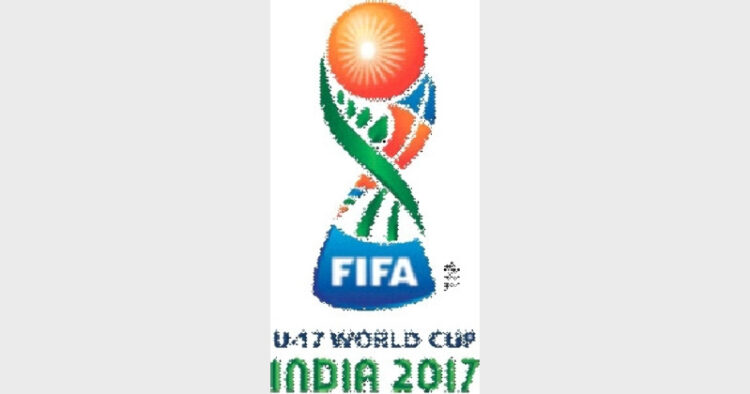 The game is set to leave a lasting legacy on the Indian sports scenario
The game is set to leave a lasting legacy on the Indian sports scenario
Abhishek Dubey
The beautiful game will be in India. In the first week of October, 2017, Football takes over in India. With the organisation of FIFA U-17 World Cup, this will be for the first time that any FIFA Tournament will be held in India. Guwahati and Kolkata in the east, New Delhi in the North, Navi Mumbai and Goa in the west and Kochi in the South are
getting decked up for this sporting extravaganza. Four of these venues falling in the North-East, West Bengal, Goa and Kerala—are supposed to be the epicentres of the football legacy in the country. And in Delhi and Mumbai, the country has huge metropolitan young population—who are now exposed to and now forms the fan club of the most competitive global football leagues. But the impact and
resonance of FIFA U-17 World Cup will be far beyond this.
Big Opportunity
India has been the host to the global sporting events earlier also. The country has hosted Asian Games twice and Commonwealth Games once. India has hosted Cricket World Cup thrice. But hosting of FIFA U-17 World Cup is unique. Soccer is the most popular global sports by miles. And, in this most popular sport, the country having the largest concentration of youth population anywhere in the globe stands nowhere in the global rankings. Seen in this overall context, the organisation of the FIFA U-17 World Cup in the country is seen as a huge opportunity and as a huge statement of intent to take the popular sports to the maximum Indian homes, More than anything, the government of India has been building on this event in a manner that it leaves a legacy, on the base of which future football revolution in the country could be built up.
As FIFA Under-17 World Cup Director Javier Ceppi says, “This is a big opportunity to create a football revolution in India. This, by far, is going to be the best football every Indian is going to witness.” Ceppi, coming from Chile, in many of the meetings and press conferences, has termed the event as ‘football revolution in the country. Young, energetic and direct, Ceppi said in one of his interview, “I come from a country where football is the number one sport. We have a big responsibility on our shoulders. We want to make football popular in India. This is the first chance for India, so let us make it count. It’s an opportunity for every football fan to come forward and say, “I am a football fan and I love the beautiful game”. Ceppi has been attending meeting involving the varied stakeholders, interacting with the Union and state government officials and working meticulously so that everything is in order on the time. And, all this leading on to the back breaking travel itinerary—has given him the peek into the football fan base in the country. He says, “I will rate the North-East region as number one in terms of football craziness. Goa and Kolkata come later in the list. I have seen Kolkatans, they are mad about football. The rivalry between the two big teams—Mohun Bagan and East Bengal—is amazing”.
But herein lays the challenge. The idea is to exponentially enhance the fan base to create a global level talent pool in this sport. Mission 11 Million is based on this philosophy. Mission 11 Million is a grass roots level programme designed to encourage children to play the beautiful game and enjoy all the associated social and sporting benefits. A Government of India and All India Football Federation initiative, Mission 11 Million, is a school contact program which aims at improving the football culture in the country, building the football ecosystem and ultimately widening the talent pool of the various national teams. The project was fully backed by Prime Minister Shri Narendra Modi. PM said, “We need the support not just of children, but also of every parent and every teacher to encourage boys and girls to play football and develop skills and fitness. I am confident that these children will be able to take Indian football to its rightful place in the world.”
Re-dressing the Footprint
Why is football the most popular global sports? The game is simple for anyone to understand and play. And, it requires the least of the equipments. Gully Cricket made cricket the craze in the country. The model could be much easily replicated in football. As Cappi says in an interview, “We are trying to bring the concept of gully football in India—just like gully cricket. You can play in the barren field and streets. You don’t need a 105 by 68 metres professional size ground to play football. I have seen craze and potential among people for this beautiful game.” With the FIFA U-17 World Cup, the country will see the completeness of the ‘top down’ and the ‘bottom up’ approach. As project director of the FIFA U-17 World cup Joy Bhattacharya says, “What happens in any spot is that you need to grow in two directions. One is top-down, which is what the ISL or Indian Soccer League is doing. They are trying to bring stars to India, bring to top level, and hope it percolates. What a world cup does, especially a junior World Cup does, is that it works from bottom-up. Doing the world cup here, having the Mission 11 Million, reaching out to 15,000 schools around the country, you are building the game from bottom-up. You can’t have a top down, and not the bottom up, and also you cant have a situation where you don’t have stars. Just look at North-East. There was not much football spurt in the 1940s. But one Bhaichung Bhutia came up; almost half of the U-17 World team is from the North-East’.
One of the biggest problems with football in India is that even with the ISL; the footprints of football in our country are very less. There are Bengal, Maharashtra, Goa, and the North-East. So the thing is that the All India Football Federation (AIFF) is looking to have division one or division two teams from half of the states of the country, before 2018. Football cannot grow without professional football teams in the states. The immediate challenge is re-dressing the footprint of Indian football. The world cup is being held in cities that already have a lot of interest in the game. The main challenge is to take it to the cities where kids don’t have opportunity to play football. And it’s here where two positive steps have been taken.
Another Feather
Firstly, watching a match during the World Cup would cost the fans less than Rs 100. Importantly, the sales of the tickets are not seen as the revenue generators. The main aim is to pull as much crowd in the stadium as possible. In the words of Cappi, “It’s for this specific reason that the ticket prices are slashed. If you give a ticket a value, it has value and if you give it as free, it doesn’t have value. Of course, there will be categories in ticket prices. We want every Indian to come in the stadium and cheer for their favourite teams”. Secondly, though Sony TV has got the telecast rights of FIFA U-17 World Cup, the signals will be shared free with the public broadcaster Doordarshan. The entire tournament will be telecast on DD Sports channel—which is a free to air channel. Though it has got its share of road locks, this is an effort to take the event to the maximum Indian homes cutting across the sections of the society.
We Indians are good at technology. We are terrific hosts. After taking charge, Union Minister for Sports and Youth Affairs, has been monitoring the preparations leading up to the event on the hourly and daily basis. After his surprise inspection at the Jawaharlal Nehru Stadium in Delhi, he tweeted-“Surprise inspection of SAI@ JLN stadium. Known faces, offices. Good not enough when best needed. Athletes first philosophy must prevail”. To bring the game to the maximum Indian homes, the government has also been working on a comprehensive media strategy. In all likelihood, FIFA U-17 will be another feather in India’s cap in terms of
organizing the sporting events. But, most importantly, where we do lack is legacy building. And, it’s here that an effort is being made for the first time. And, it’s here that we can take the expertise from FIFA—globally known for its legacy building capabilities. While wishing Indian team the best of luck for participating in the first-ever FIFA event, one may hope that the game will leave a lasting legacy on the Indian sports so that before many of us leave this beautiful planet, we do see our Indian team excelling globally in the beautiful game.
(The writer is senior sports journalist)














Comments